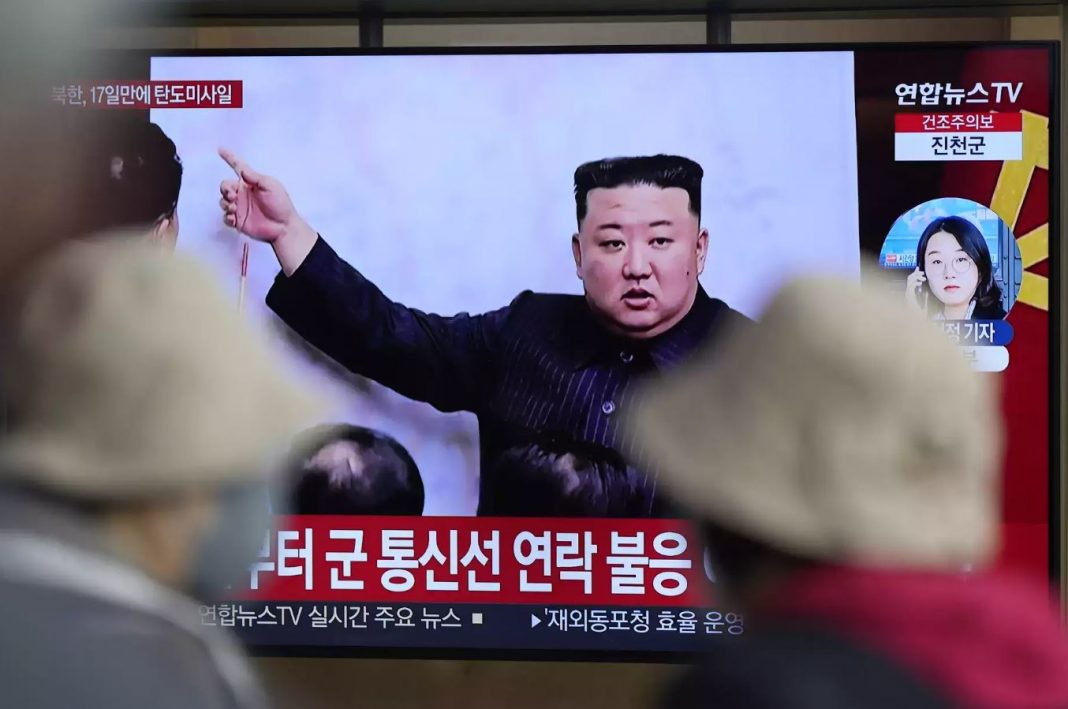North Korea Claims Successful Test of New Intercontinental Ballistic Missile Fueled by Solid Propellants on April 14. This discovery, if verified, may give North Korea with a weapon that is more difficult to detect and is aimed towards the continental United States.
Mr. Kim has promised to significantly build his nuclear weapons in order to “constantly strike extreme uneasiness and horror” in the minds of his adversaries and cause them to feel remorse for the decisions that they have made in the past.
The United States and South Korea are conducting increasingly large-scale military drills, which North Korea views as dress rehearsals for an invasion. Despite the fact that North Korea views these drills as an invasion rehearsal, it is using them as a pretext to push further along with its own weapons development. North Korea has justified its weapons displays as a reaction to these drills.
Mr. Kim also said that the Hwasong-18 will swiftly enhance North Korea’s nuclear reaction posture and provide more backing for an aggressive military policy that promises to sustain “frontal confrontation” against its adversaries.
Since 2017, North Korea has conducted a number of tests of different intercontinental missiles, some of which proved the potential range to reach the mainland of the United States. However, the remaining missiles utilise liquid fuel, which must be injected relatively near to the launch, and therefore cannot stay fuelled for extended periods of time.
An intercontinental ballistic missile (ICBM) that had solid propellants as part of its design would be simpler to transport and conceal, as well as easier to shoot; this would make it more difficult for adversaries to detect and respond to the launch. It is not immediately obvious how close North Korea is to developing a solid-fuel intercontinental ballistic missile (ICBM) that is operational and capable of targeting the mainland of the United States.
The Ministry of Defence in South Korea believes that North Korea’s technology development has not yet progressed to the point where it can shield its ICMB warheads from the severe circumstances of atmospheric reentry. Although he admitted that North Korea was making significant progress on the technology, South Korea’s Defence Minister Lee Jong-Sup said to MPs one month ago that it is very unlikely that North Korea has yet mastered the technology necessary to install nuclear warheads on its most powerful short-range missiles aimed at South Korea. He did, however, concede that the nation was making significant progress on the technology.
State-run media in North Korea disseminated photographs showing a ballistic missile being launched from a launch vehicle at a test facility located within a forest as Kim Jong Un, senior military officials, and Kim Jong Un’s daughter observed from an observation station nearby.
The first and second phases of the test reportedly landed into seas off the country’s eastern coast, which led the agency to conclude that the test did not pose a danger to the security of any other nations. Despite the fact that the official Rodong Sinmun newspaper released an overhead shot of an item that it characterised as the third stage after separation, it did not offer any specifics regarding what happened to the third stage.
She was alluding to the birthday of Kim’s state-founding grandfather, Kim Il Sung, which is this coming Saturday, as well as a meeting that is scheduled to take place in Washington, D.C. this month between President Joe Biden and President Yoon Suk Yeol of South Korea.
Solid-fuel The Intercontinental Ballistic Missiles (ICBMs) were at the top of a long wish list that Kim Jong-un revealed in 2021 as part of a five-year plan for the expansion of North Korea’s armed forces.
As the pace of North Korea’s weapon development as well as joint military drills between the United States and South Korea quicken, the North has already conducted over 30 missile launches in this year alone, spread out among 12 separate launch operations. Last month, the United States and South Korean armies participated in their largest field exercises in recent years. In addition, the two countries staged separate combined navy and air force, which included a strike group from an American aircraft carrier and nuclear-capable bombers from the United States.

